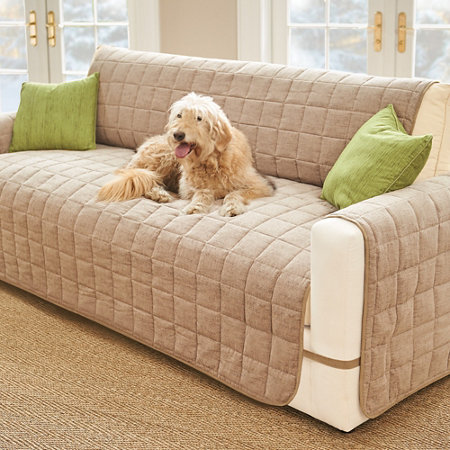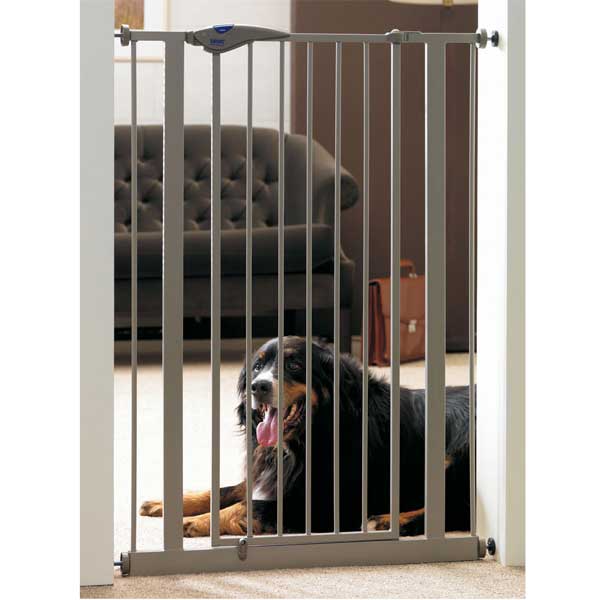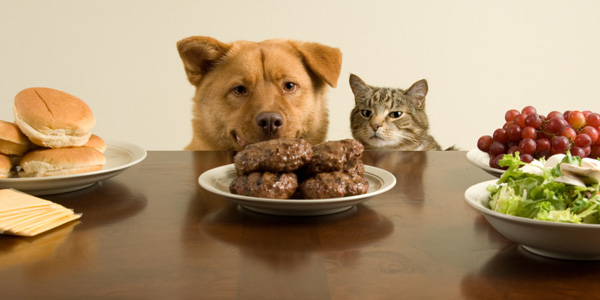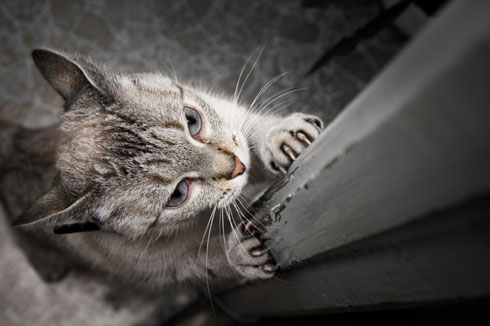Pet Proofing Your Furniture
Spring is the time of new life and a fresh home, and for you that might mean a new pet. Although it’s a very exciting time for you, it’s important not to let that excitement overshadow the practicalities of owning a new fuzzy companion, especially when it comes to keeping them safe.
There are a lot of potential hazards to your new pet, as well as ways in which it can disrupt your home, that are important to take care of before letting a new puppy or kitten loose in the house. Here are some thoughts on how to pet-proof your home.
Keeping Furniture Safe
Your new pet will probably love your furniture just as much as you do, but not necessarily for the same reasons. Dogs will want to leap and bounce all over your chairs and sofa, and use the cushions as chew toys. Cats will treat anything they come across as a potential scratching post, shredding it to pieces in the process. There are a few steps you can take to keep your furniture safe from your pets.
Furniture Covers

One of the best things about having gorgeous furniture is being able to show it off, so covering it up to protect it from pets might seem counterintuitive. At the same time, though, keeping it covered keeps it safe, and it’s better to have beautiful furniture you can only show off occasionally than clawed-up furniture you can never show off at all.
At least for a little while, you’ll probably want to keep your furniture covered until you can train your pet not to mess it up. Even after it’s well trained, you might want to keep using coverings to keep it free of hair, claw marks and other potential damage. That depends on how much you let your pet interact with your furniture.
Furniture covers don’t have to be big, white sheets though. You can keep the great look of your living room alive by choosing throws that match the décor, and look good while still doing the job of keeping your furniture protected. If you really want to show it off, you can remove the throws for special occasions to reveal the flawless furniture underneath.
Scratching Posts/Dog Chair
Part of pet-proofing your home might be to get some new furniture for your pets so that they leave yours alone. If you want your dog to have a chair to jump on, but not one of the nice ones, designate a specific piece of furniture as the place the dog is allowed to sit. Otherwise, train it not to jump on furniture at all, and use covers to keep it safe until puppy learns.
Cats can’t be trained not to scratch – it’s a natural part of who they are – but they can be trained what to scratch. Getting a scratching post isn’t enough to stop your cats clawing at everything, so you’ll have to train them to use the scratching post, and even keep an eye on them once they’ve learned. Eventually they should know well enough.
Baby Gates, Fire Guards and Closed Doors

Whether it’s for safety reasons, or just to keep the room intact, some areas of the home need to be completely off-limits to your pets. The simplest solution of all is to keep the doors closed, ensuring that your pet can’t get in unsupervised, or while you’re cooking, cleaning or eating.
Completely shutting your pet out isn’t always ideal though. Perhaps your dog gets lonely, or you don’t like shutting out the airflow or light. Having to keep doors closed all the time can even make you feel lonely and cramped.
Baby gates are a great way to stop pets getting in and out of rooms. For dogs, a baby gate by itself should stop it from getting anywhere you don’t want it. For cats, a baby gate can be adapted with some wire mesh to stop it from squeezing through the gap. Fire guards can be put to the same use, just make sure that they’re stable and your pet isn’t inclined to knock them over to get through to you.
Truly adventurous pets aren’t always kept at bay by these devices. Larger dogs and practically any cat will be able to jump over a small barrier if they really want to, and if you’re not there to tell them off, they’re even more likely to do so. If you really can’t let a pet get in to a room, and you can’t be there to keep them well behaved, then closing the door is still the best option. In that case, a baby gate can help prevent them from using the handle if they’ve figured that trick out.
Know Hiding Places
One of the ever-present dangers to your pet is finding all the small spaces in your house that they can crawl into and cause havoc, or getting access to dangerous items. Cats are notorious for this, but small puppies can squeeze into some surprising places too if you’re not keeping an eye on them.
Leaving cupboards open doesn’t just give your pet access to what’s inside, it gives them an option to get in while your back is turned, and then get stuck in there if you close the door before they get out. Don’t leave cupboard doors open even for a few seconds while you’re not looking, especially if you have a quiet cat that can sneak in and won’t call for help.
Washing machines and tumble dryers are another potential hiding place for pets that might be interested in taking a nap there. Always leave the doors to these closed, and make sure nothing is in there before you put your laundry in.
Make sure all nooks and crannies in your home are covered up or inaccessible to pets. Cats are probably going to test your limits in terms of places they can access, but as long as they can get out again and there’s nothing unsafe for them there they should be able to take care of themselves. Just make sure that all the unsafe places are taken care of, and know where your pet might like to hide.
Cages
If you can’t trust your pet without supervision, especially common for new pets, then you’ll want to invest in a cage to keep them in while you’re away. Puppies can be crate trained to make sure that they feel safe and cared for in their cage while you’re away.
Cats can be caged too, though they may feel more stressed than a dog would in the same situation. For cats you might instead want to choose a room that they’re safe to stay in during the day, but if you don’t have a safe space, then a larger dog crate with food, litter box and cushions can do the trick.
Ideally your pet should be trained so that you can trust them while you’re away, but situations aren’t always ideal. Just make sure that you don’t end up using the cage as a way to avoid having to train your pet, as it can be confining if overused.
Tidy Up
Not that your home isn’t already tidy, but now that you’ve got a pet you need to be extra vigilant about even the smallest things, and make sure that everything has a pet-safe home. This is especially true of puppy owners, since puppies will mostly interact with strange objects by chewing, but new cat owners should also be aware to be cautious. Cats are well known for their curiosity after all.
Food

Food is the most likely target for a curious creature, and the most likely thing to be gobbled up when you’re not watching. All food that isn’t meant for them needs to be kept out of a pet’s reach, which is probably further than you think. Cats can get practically anywhere they want to, and even small dogs can find a way to knock food down from higher surfaces onto the floor.
Keep most of your food in cupboards or containers with tight lids. Dirty plates and especially leftovers can’t be left anywhere that a pet might be able to reach them. Throw food away once it’s done with, and clean plates as soon as possible, especially if a cat might climb onto the counter and start licking it up.
Finally, clean away crumbs that are left on tables, counter tops and floor, especially if it’s from food that is toxic for your pets. Even if it’s not toxic, vacuuming up your food is a good way for your pet to become unhealthy by eating too much and losing appetite for its real dinner.
Covers for Electrics
Loose electric wires are incredibly dangerous for pets that don’t know better. Dogs especially might want to treat them like chew toys, but cats and other animals can be prone to chewing loose wires. The dangers of that don’t need to be stated.
Keep wires out of the way, where pets can’t reach them, but keeping them behind furniture, trailing them through cabinets or over door frames instead of the floor, and covering any otherwise loose wires with cable covers.
Childproof Latches
Most items will be safe from prying pets as long as they’re kept in high cabinets, but clever cats and dogs can still open certain cabinets, or you might just want to be extra secure. This is even more important when it comes to cabinets that contain toxic foods and chemical cleaners.
Childproof latches offer the perfect protection against pets that love to open cabinets. They offer practically no resistance to an adult who wants to open the cabinet, but should foil the attempts of an animal that can only fumble at them ineffectually.
It’s a good idea to use childproof latches on any cabinets that contain dangerous items in rooms that your pet can access, and if you find that they’re getting into other cupboards too, you can extend security measures to those as well.
Bins
Pets love to root around in bins when they get the opportunity, and not just because they know it’ll annoy you to come home to a kitchen floor covered in rubbish. Bins are full of interesting smells that your pet just has to investigate.
Bins that are easy to knock over make great targets for dogs, especially if the lid comes off when it falls over. Stronger and sturdier pedal bins are often a safe option, being difficult to knock over and difficult to open.
Keeping your bin in a cupboard is generally a safe option too, since your pets shouldn’t be able to access it there without considerable effort, and even then will have difficulty getting into it or knocking it over from inside the cupboard.
Plants
Finally, a lot of common houseplants are toxic to pets when eaten, which is exactly what a curious pet is likely to do with them. Even if they’re not toxic, having a half chewed or torn up plant isn’t a good look for your home.
Keep plants out of reach of your pets, which for dogs mostly means keeping them off the ground, and for cats means keeping them away from any flat surface that leaves the cat room to jump on and have a nibble. Hanging or raised baskets may become your only option, or saying goodbye to house plants altogether.


